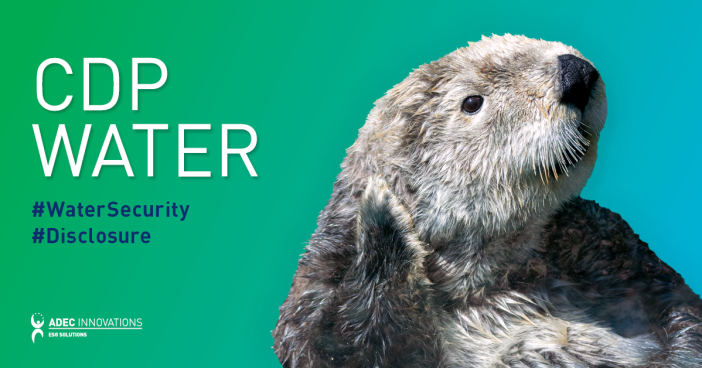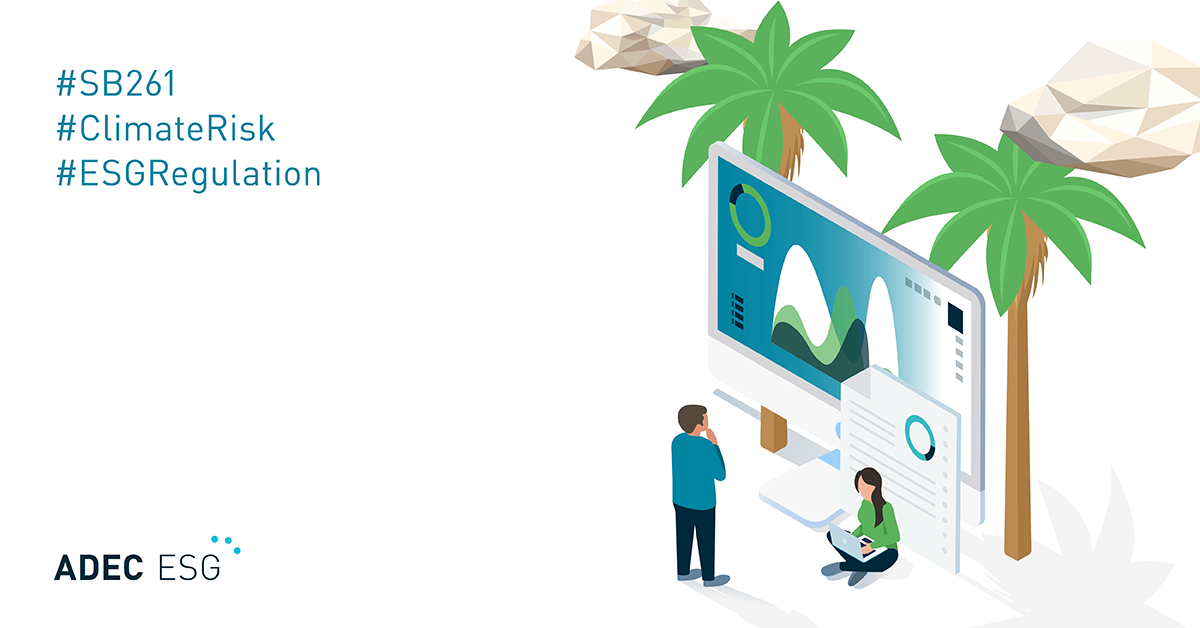The CDP Water Security questionnaire aids companies with driving improvements in water management and enables benchmarking against leading practice. Along with CDP’s Water scoring methodology, the questionnaire provides data users and the companies themselves with valuable insight on current and future water-related risks and opportunities.
According to CDP, the Water Security program has grown significantly since it was established in 2010. This growth is evident in the numbers of companies responding to the Water questionnaire, the value of associated assets, and the number of investors and customers requesting the data. CDP now holds the world’s largest corporate water dataset, with more companies reporting than ever before.
Companies responding to the 2023 CDP Water questionnaire will find some increased robustness in criteria, new and modified questions applicable to all sectors, and the introduction of a new Plastics module. Here are the notable CDP Water questionnaire developments to help companies prepare their response for this reporting year.
Key topic changes and their rationale
For the 2023 CDP Water questionnaire, 27% of the 2022 questions are modified and the number of questions has risen by fourteen, with 85 questions in total (not including sector specific questions or the Supply Chain module). These are some of the key Water Security topics that will be introduced or modified for the 2023 questionnaire:
1. Water accounting and value chain engagement
CDP is requesting information on the measurement and monitoring of water accounting and value chain engagement on water-related issues from all companies, regardless of their importance rating for water.
In the past, disclosing on these topics depended on the importance (current and future) of water quality and water quantity to the success of a respondent’s business.
2. Existing and anticipated future trends for water accounting data
To encourage the transition to a water-secure future, CDP added data points requesting the anticipated future trends for water accounting data. Details on requested for (a) total volumes of water withdrawn, discharged, and consumed and (b) water withdrawn from areas with water stress.
The long-term goal is for companies to assess anticipated forward trends in water demand and transition towards business models which do not pose threats to rivers, lakes, aquifers, and streams.
3. Driving supplier action
Under the topic of supplier action, CDP introduced new questions on classifying suppliers based on water impacts so that companies can target their engagement efforts towards their most impactful suppliers.
The new questions on water-related requirements for suppliers can serve as a powerful mechanism for driving water security actions in a company’s supply chain. Developments in the reporting and disclosure of supplier actions can also help companies target their efforts towards suppliers with the largest water impacts.
4. Pollution
Questions on the identification and management of potential water pollutants will now be presented to all respondents. These were previously presented only to specific sectors, namely chemicals, electrical utilities, food, beverage and tobacco, and oil and gas. These questions encourage companies to define and identify potential water pollutants linked to their business operations and products, and ultimately reduce and manage pollutants effectively.
5. Hazardous substances
New questions on the use and substation of hazardous substances will now be presented to all companies, in alignment with S&P Global: Corporate Sustainability Assessment, DJSI 2022. The aim is for companies to track their use of hazardous substances and transition away from sourcing and using hazardous substances in their products.
6. Targets
Targets relating to water pollution, water withdrawals, and water sanitation and hygiene (WASH) will be reported in separate questions, emphasizing these as critical areas where companies should be setting and achieving targets.
In working towards reducing water withdrawals, reducing water pollution, and improving WASH services, companies should work towards developing and reporting against timebound, tracked, and quantitative targets which are informed by science. CDP’S focus on these items are reflective of its alignment and inclusion of the goals of the Science Based Targets for Nature Initiative.
7. Coal sector: Tailings dam management
Companies with coal mining operations will be presented with questions on tailings dam management. Coal mining depends on and processes large volumes of water, and the resulting tailings dams are a key environmental risk for this sector, thus requiring strong management procedures.
Tailings dam failures and toxic spills can lead to long-lasting impacts on human health and downstream riverine ecosystems. Consequently, companies with tailings dam operations must take appropriate actions to prevent and mitigate risks to human health and ecosystems.
8. Agricultural commodities sector: Production and sourcing from water-stressed areas
Companies in the agricultural commodities sector will now be presented with questions on agricultural production and/or sourcing from areas with water stress. Previously, these questions were specific to the food, beverage, and tobacco sector only.
The ambition for this disclosure is for companies which produce or source agricultural commodities in water-stressed areas to reduce their water withdrawals from these areas.
CDP Plastics module: Disclosure on this dominant pollutant
CDP’s collective ambition is to accelerate a sustainable circular economy for plastics, contribute towards the elimination of plastics pollution, and restore ecosystem health. With this overarching goal, CDP is taking its first steps in expanding its disclosure framework to help solve the plastic pollution crisis.
The was new Plastics module developed with expertise and support of The Pew Charitable Trusts, Minderoo Foundation, and the Ellen MacArthur Foundation. Additionally, in July 2022, CDP ran a plastics consultation with its stakeholders, where they provided feedback on:
- The proposal to request information on plastics production and use in CDP disclosure.
- The feasibility and relevance of draft questions.
For 2023, CDP will take a light touch approach to collecting . It will also focus on the most problematic plastics production and use methods, i.e. plastic polymers, durable plastics, and plastics packaging. The module covers plastics in the supply chain, potential impacts to the environment and human health, business risks, and targets.
Five questions relating to the awareness of plastics issues for the business will be included in the Water Security questionnaire:
- Have you mapped where in your value chain plastics are used and/or produced?
- Across your value chain, have you assessed the potential impact of your use and/or production of plastics on the natural environment and society?
- Across your value chain, are you exposed to plastics-related risks with the potential to have a substantive financial or strategic impact on your business?
- Do you have plastics-related targets, and if so what type?
- Indicate whether your organization engages in the following activities:
- Production of plastic polymers
- Production of durable plastic components
- Production/commercialization of durable plastic goods (including mixed materials)
- Production/commercialization of plastic packaging
- Production of goods packaged in plastics
- Provision/commercialization of services or goods that use plastic packaging (e.g., retail and food services)
There are also quantitative questions for companies with certain plastics production and use activities on total weight, raw material content, and circularity potential. These metrics are only requested from companies with specific plastics activities.
- Provide the total weight of plastics polymers sold and indicate the raw materials.
- Provide the total weight of plastic durable goods/components sold and indicate the raw materials.
- Provide the total weight of plastics packaging sold and/or used and indicate the raw materials.
- Indicate the circularity potential of the plastics packaging you sold and/or used.
CDP recognizes that many companies are developing their action and reporting on plastics, hence responses to these questions will not be scored in 2023.
Beyond the 2023 Disclosure
In line with CDP’s 2025 strategy, over the next three years, the organization will be making relevant changes to their questionnaires and disclosure systems. For these changes, CDP is starting with the ocean—specifically plastic pollution. From 2023, CDP will begin introducing plastic-related questions and metrics into their disclosure mechanism.
In line with the emerging thinking under the Taskforce on Nature-related Financial Disclosures (TNFD) and European Sustainability Reporting Standards (ESRS), CDP is planning to expand its scope to include oceans as apart of the disclosure process. CDP has been assessing gaps and opportunities in existing ocean disclosure work. The findings from these assessments will also help CDP identify the best ways to build on the efforts already underway in enabling disclosure relating to ocean impacts.
Lastly, following the work of the Science-based Targets Network, CDP will explore how the water questionnaire can track the uptake of freshwater science-based targets. They will continue to develop transition-related metrics and scoring to assess corporate progress towards water security.
As CDP ups the ante on their 2023 water questionnaire, respondents and data users can bet on more transparent disclosure of companies’ actions and targets towards a water secure future and zero plastic pollution.
According to the report “Global Plastics Outlook: Policy Scenarios to 2060”, without radical action to curb demand, increasing product lifespans, and improving waste management and recyclability, plastic pollution will rise in tandem with an almost threefold increase in plastics use driven by rising populations and incomes. The OECD report estimates that almost two-thirds of plastic waste in 2060 will be from short-lived items such as packaging, low-cost products, and textiles.
CDP’s emerging and critical work in developing reporting and disclosure for plastic use and activities will ensure companies are ahead of the curve as policy makers and investors begin to increase the demand for plastics data, and with eventual mandatory disclosure and more concrete policies likely to follow suit.
For over 30 years, ADEC ESG Solutions has worked with global organizations to improve their ESG programs and reporting. In 2022, we helped 94% of our clients achieve CDP Management B or better. Browse select CDP services on the ADEC Marketplace, or click here for a more comprehensive list of how we can help.




